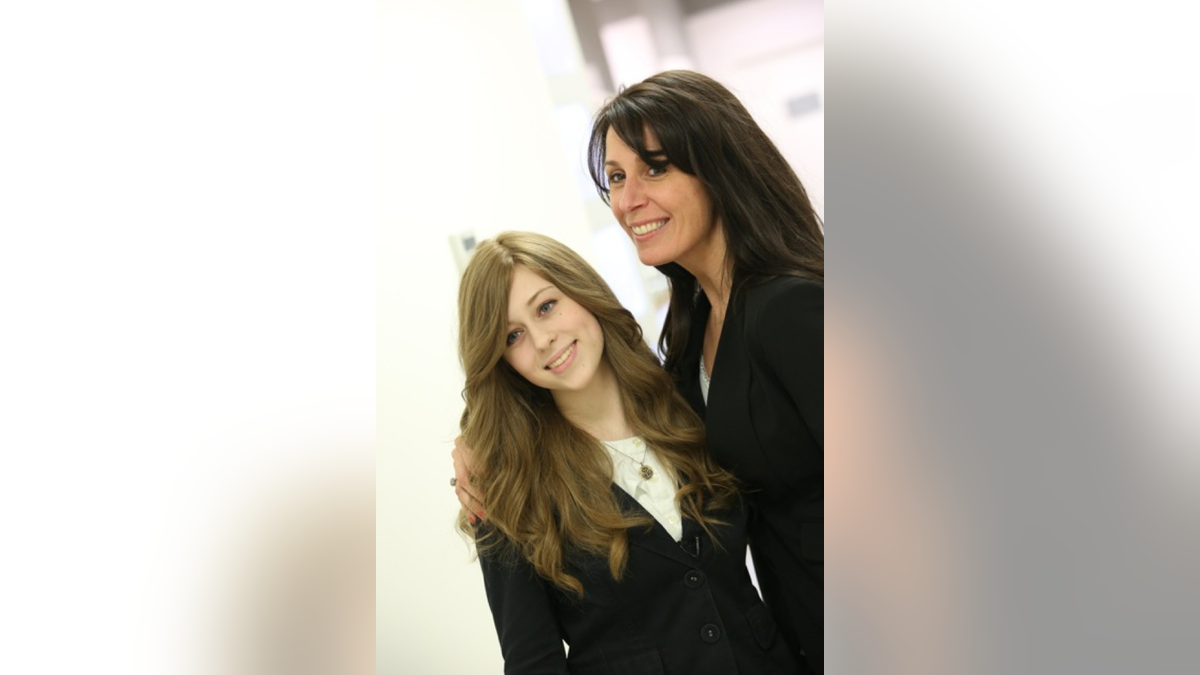Sheri Valle was diagnosed with small cell lung cancer in April 2011, but the idea of re-growing the hair she lost from treatment gave her hope for normalcy after she finally beat the disease. After going into remission in early 2012, Valle would get her hair back— just not in the way she expected.
Valle, who lives in Fanwood, New Jersey, ended up suffering permanent hair loss after undergoing precautionary radiation on her brain, where doctors feared the cancer could have spread. But thanks to a custom, 3-D printed prosthetic scalp hand-injected with healthy human hair follicles to match her natural head shape and strands, Valle feels normal again. In fact, she’s more confident than ever.
“I always had nice hair, but I never got the comments I get now,” 51-year-old Valle, who got her hairpiece in May 2015, told FoxNews.com. “People say, ‘Wow, I love the color,’ and ‘It’s so shiny!’ I’ve heard that a million times.”
Valle got the custom hair and scalp system, called the CNC, at Transitions Hair Solutions in Wall Township, New Jersey. She’s about one of 60 customers who’s gotten the service at the center, said Transitions owner Danielle Grillo, who offers the CNC not only to cancer survivors, but also to people with alopecia, or hair loss, and trichotillomania, a disorder whereby an individual can’t resist pulling her hair out.

A photo of Sheri Valle's custom mold and the film used during the application process. (Photo courtesy Transitions Hair Solutions)
The caps themselves are produced out of Bologna, Italy-based Cesare Ragazzi Laboratories, but CNC-certified centers worldwide, like Grillo’s, apply them to clients’ heads then help them maintain the system.
“It’s not a traditional hairpiece or wig— it’s ultra-custom,” Grillo told FoxNews.com. “It’s the most natural thing I’ve seen in the 21 years I’ve been doing this.”
Like human hair, the follicles can be dyed, highlighted and styled however the client wants. But unlike wigs, the scalp portion of the CNC is made with biomedical-grade material that’s antimicrobial, antifungal, and breathable. Because the CNC is secured to the head, clients can also go swimming, windsurf or do anything a normal person with normal hair can, Grillo said. They can even go to a regular salon, and often the hairdresser won’t know their hair isn’t growing from their head.
“They turn back into how they used to be,” Grillo said of her clients, “and they let you in to do that. I can’t think of a better feeling.”
From design to application, preparing the CNC for a client is a three-month process. First, Grillo observes and records specific details of the client’s hair, including texture and direction of growth, as well as the client’s scalp pH, hydration levels and pigmentation. The client’s scalp is then mapped out and a replica mold is created based on how much of the head the client would like covered. The mold is then sent to Bologna, where bioengineers create an exact replica of the client’s scalp using 3-D printing. Virgin, unprocessed hair based on the client’s specifications is then injected into the custom scalp.
At centers like Transitions, the final custom CNC is then applied to the client’s head using medical-grade glue or adhesive tape. Clients don’t take them off at all— showering and sleeping in the CNC— until they return to Transitions for follow-up appointments every four to six weeks. At that time, Grillo trims any hair that’s grown underneath, treats the client’s natural scalp, and disinfects the CNC in a custom solution. A client typically uses two CNCs that last a year apiece, alternating the systems at each follow-up appointment.
Depending on the unique design of the client’s scalp and hair, the CNC system can cost anywhere between $3,000 and $10,000, Grillo said.
Michael Suba, owner of Toronto, Canada-based Continental Hair, also offers the CNC to his clients. Like Grillo, about 60 of his customers have them. Suba himself got a CNC after suffering from hair thinning due to thyroid medication he had to take following radiation for Hodgkin’s lymphoma, which he had been diagnosed with at age 25.
“I play hockey with mine,” 51-year-old Suba, who got the CNC about three years ago, told FoxNews.com. “It’s not hot; it’s not uncomfortable.”
Suba worked with Grillo for a documentary on one of Suba’s longtime clients, Kea Buote, who traveled with Grillo to Bologna to get the CNC and has since pursued her dream of becoming a dancer. In the documentary, “Kea Can Dance,” Buote describes how suffering from alopecia due to a rare disease impacted her self-confidence on a daily basis. With the CNC that she got in March, she’s able to focus on dancing, not on her hair.

Danielle Grillo poses for a photo with Kea Buote, who is wearing her custom CNC. (Photo courtesy Transitions Hair Solutions)
Buote’s story is like that of many patients of Grillo’s and Suba’s, the two say.
“You have these women in a lot of distress who have hair loss,” Suba said. “They’re always thinking about the limitations of what’s out there: a wig or a hair piece or things that don’t fit or don’t stay on right … it’s so important for them to know there’s something that can help,” he said. “It really gives you a ray of hope.”
For Valle, having a full head of hair again has given her the confidence to walk her 27-year-old son Anthony down the aisle next month, when he’s getting married.
“Just having hair for that is a big to-do,” she said. “Just being alive is a big to-do because I survived small cell lung cancer. I’m glad every day when my foot hits the ground, but when it hit the ground without hair, it was very depressing.”